In Part 1 I started telling you about swapping out the vintage Altec 804A compression drivers (below left) in my vintage "Stokowski" Altec loudspeakers for the vintage Altec 802D compression drivers (below right) from my vintage Altec 832A Corona loudspeakers.
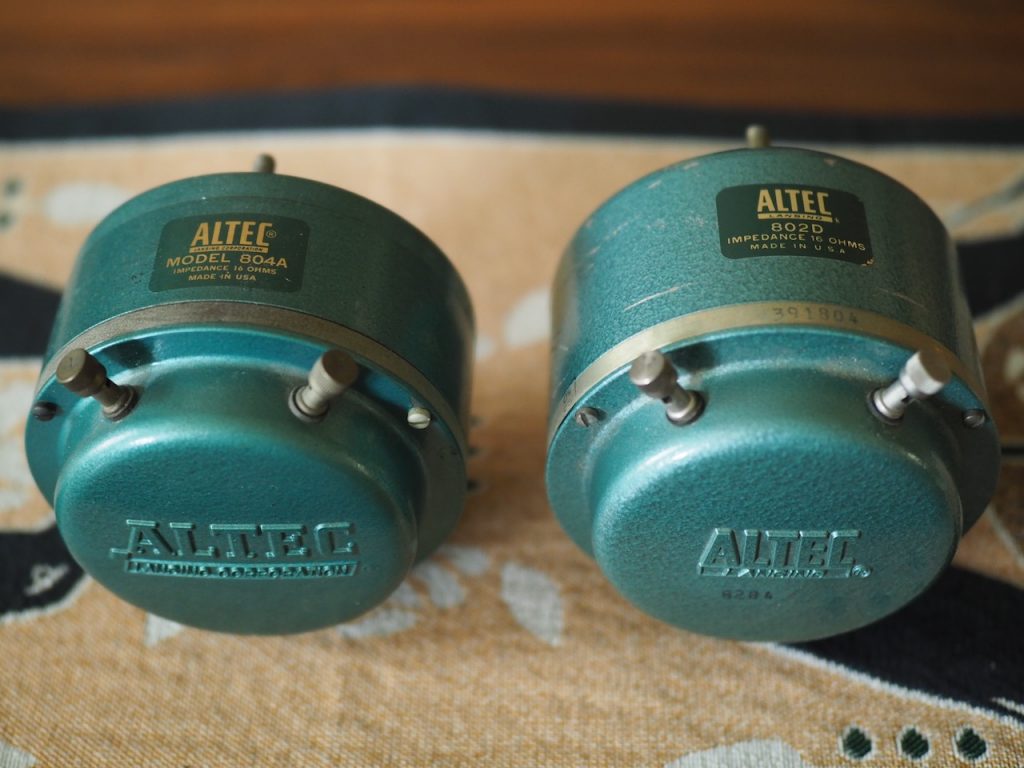
Altec 804A (left) and 802D (right) compression drivers.
Vintage Altec 802D compression drivers are highly regarded by Altec aficionados, but you don't hear as much about the less common vintage Altec 804A compression drivers, so I thought it would be fun to try both compression drivers in my "Stokowski" Altec loudspeakers as I was curious about how they compare to each other.
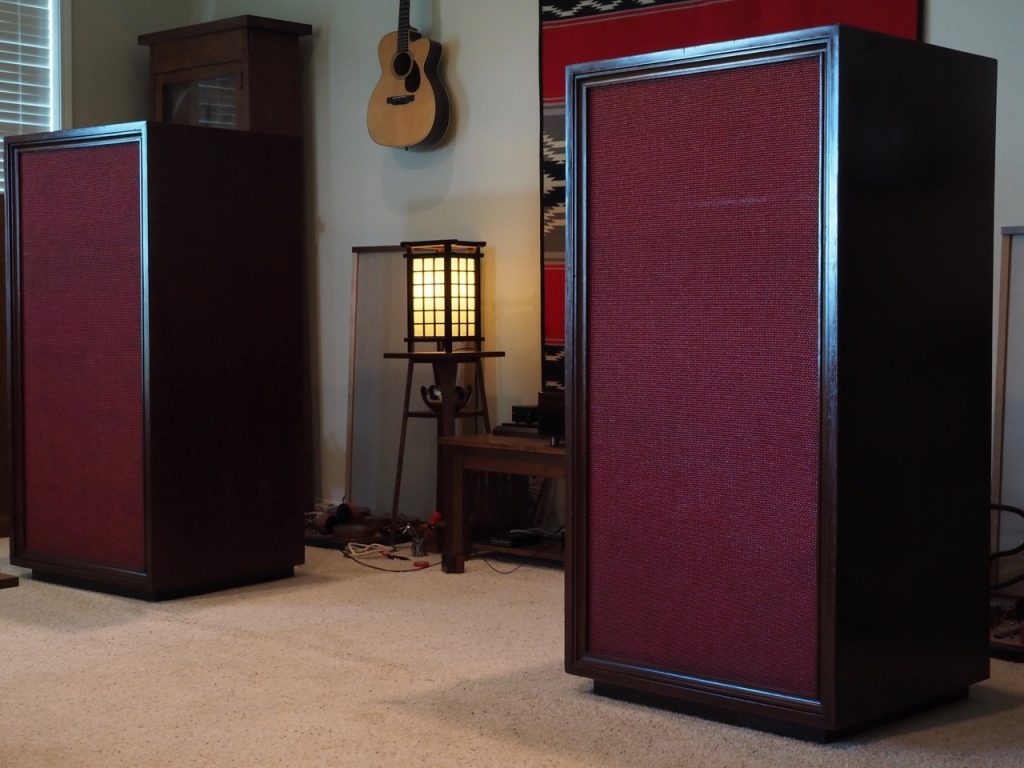
The "Stokowski" Altec loudspeakers with their Duelund CAST tinned-copper crossovers.
As a brief refresher, the 802D and 804A are essentially the same compression driver with one significant difference, the magnet size / strength, which you can easily in the photo above, with the 802D using a 1.2 lbs., 15,250 Gauss, magnet, and the 804A using a 13 oz., 13,000 Gauss magnet.
Why the different magnet sizes / strengths for the same driver design?
The Alec literature says the 802D was intended for use in large spaces with high ambient noise levels, and the 804A was intended for use in smaller spaces, like home listening rooms or smaller recording studios, with moderate ambient noise levels.
So, my understanding of Altec's logic, was that the 802D compression driver could be driven harder with its bigger magnet before it would break up, making it the driver of choice between the two for large and noisy rooms where you needed to fill a large space with sound over the din of lots of background noise (like in an auditorium, for example).
Conversely, the 804A compression driver was - magnet-wise - more optimized for the needs of smaller spaces, like a home listening room or smaller recording studio, where there's comparatively little background noise.
Somewhat ironically, Altec didn't really follow their own logic regarding these two drivers, as you often see the 802D compression driver installed into commercial Altec loudspeakers that were intended for home listening, like my Altec 832A loudspeakers, for example.

Vintage Altec Corona 832A loudspeaker.
So in Part 1 I removed the 804A compression drivers in the "Stokowski" Altec loudspeakers ...
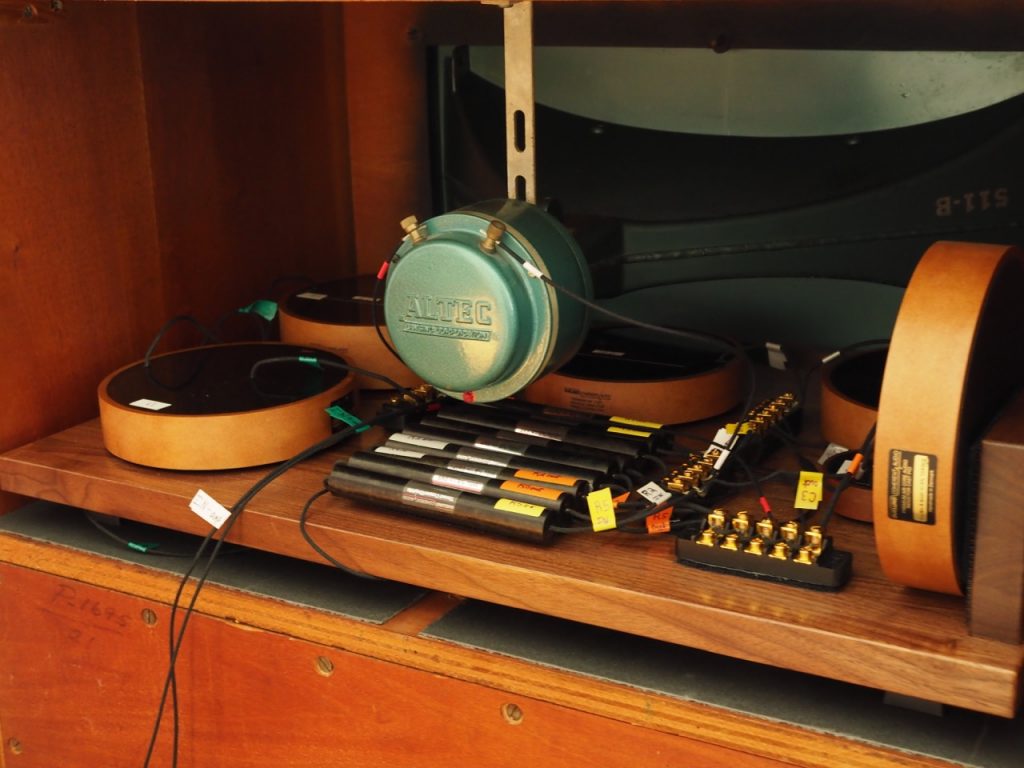
The original 804A compression driver in the "Stokowski" Altec loudspeaker.
... and installed the 802D compression drivers into them.
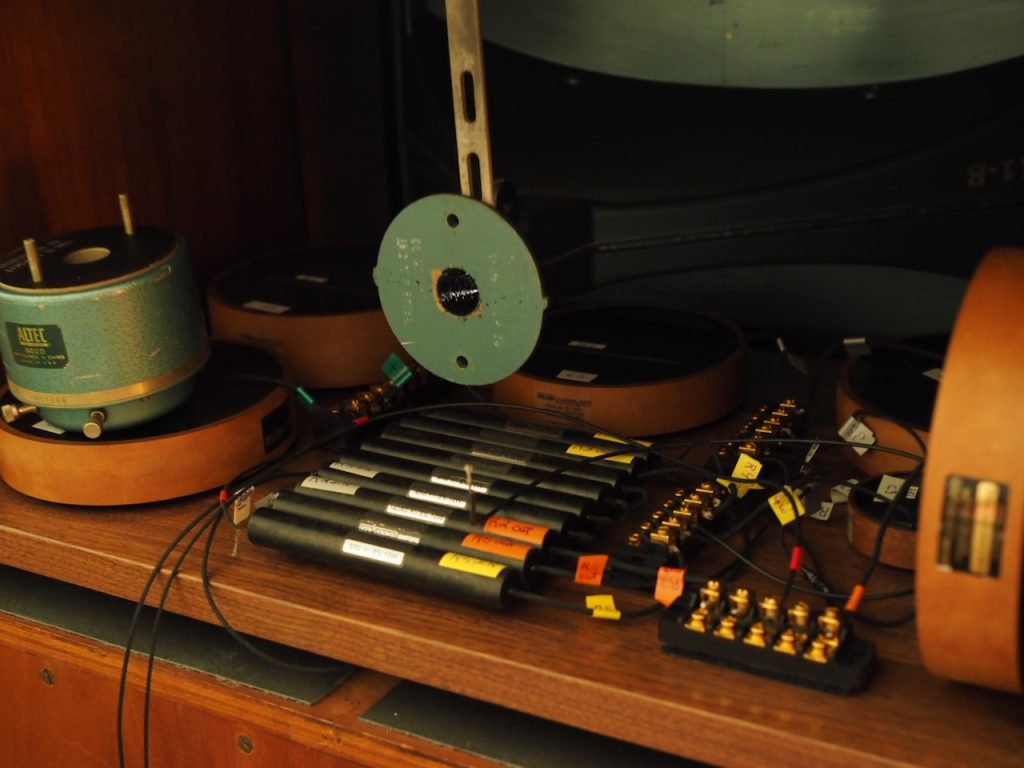
"Stokowski" Altec with compression driver removed.
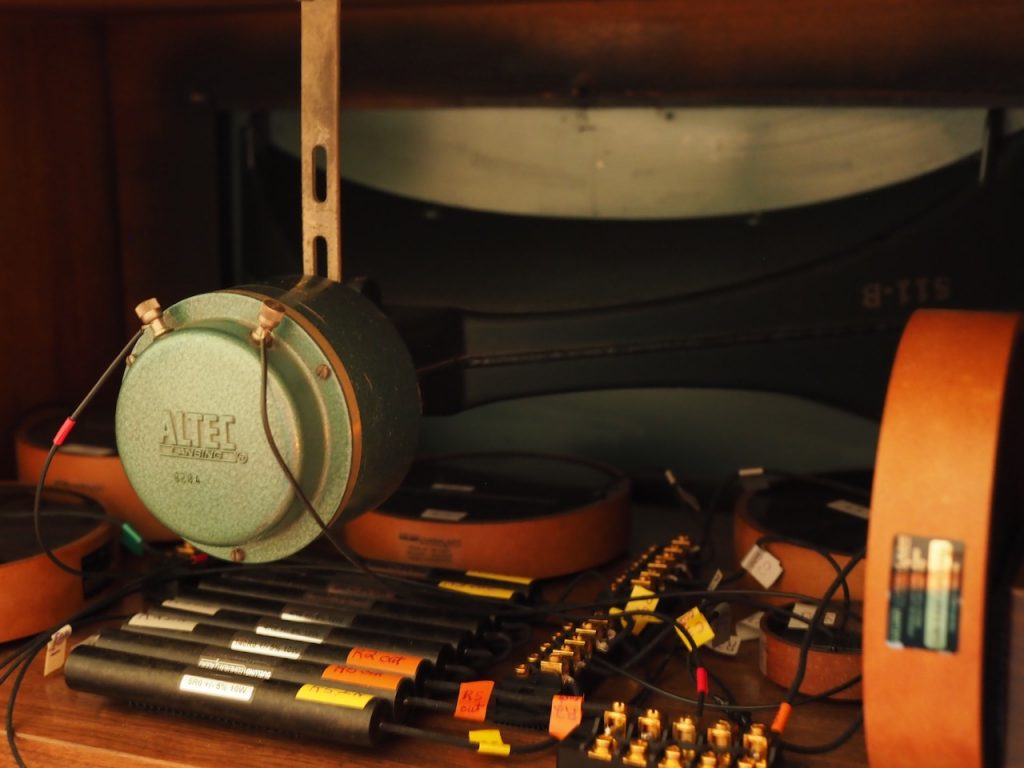
Altec 802D compression drivers installed into "Stokowski" Altec loudspeaker.
During an admittedly short listening session, it seemed the differences in sound between the 804A and 802D were minimal, and I wasn't sure that I was really hearing any differences between them in the range of about 80 - 95 dB SPL.
As an aside, when listening to live music, the sound pressure levels vary depending on the genre of music played at a concert.
For example, for the types of live music I listen to most frequently, typical sound pressure levels are as follows (as recommended by Crown for setting PA levels at a concert):
- Folk: 75-90 dB SPL
- Jazz: 80-95 dB SPL
- Classical: 100 dB SPL
- Pop: 90-95 dB SPL
- Rock: 95-110 dB SPL
Factoid: The loudest documented concert was by the rock & roll band Deep Purple in 1972, when they played a concert at the London Rainbow Theatre at an SPL of 117 dB.
So, to listen to that spectrum of live music genres, a loudspeaker has to be able to cover about 75 to 110 dB SPLs in realistic fashion to achieve a live-like presentation, without sounding strained, hard, or amusical.
That doesn't mean a listener should always listen at those volume levels, and I don't, but if a component is up to being able to do that, you know it can perform when the time comes that you want to listen at live-like levels.
My observation is that many well-designed audiophile-style loudspeakers can sound decent at lower than live volume levels. However, when you start to raise the volume to live-like levels, you find a lot of these same loudspeakers fall apart from a musicality perspective, often getting hard and forward in the upper-midrange.
When you hit live-like SPLs you find out a lot about loudspeakers, with the best of them still sounding natural in terms of musicality when pushed hard, and with lesser examples unravelling, and getting hard and forward at live-like SPLs.
I mention all this because I was thinking about these various aspects of sound reproduction as I was considering what differences might be audible between the 802D and 804A compression drivers.
So anyways, I wanted to listen to the two compression drivers over a longer period with a greater range of music and sources (using both Red Book CDs and vinyl), so I could get a broader perspective on their performance.
So, for the last 10 days I've been listening to the vintage Altec 802D compression drivers in a variety of musical contexts to get a better handle on what they are doing, and when.
I listened to a lot of music over the last 10 days, on both Red Book CD and vinyl, but here's some LPs I particularly enjoyed that I'll offer up as examples, in an attempt to articulate what I heard from the 802D compression drivers.
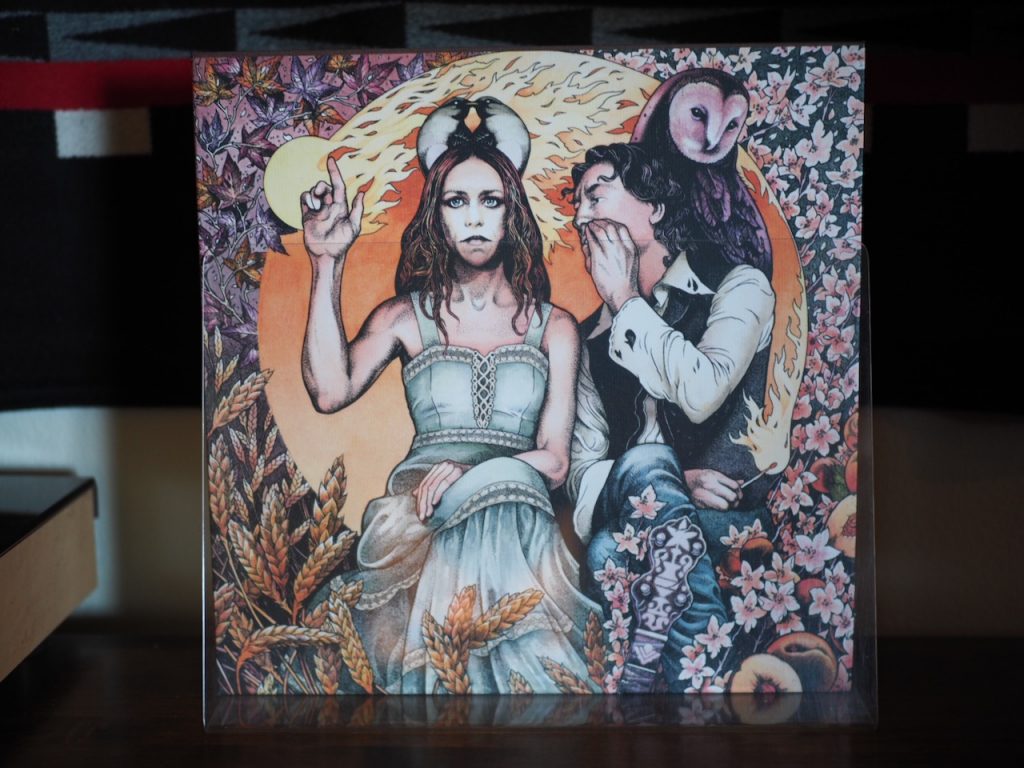
Gillian Welch & David Rawlings' "The Harrow & The Harvest".
Gillian Welch & David Rawlings' The Harrow & The Harvest LP is a superb album I hadn't listened to for a while, and it didn't disappoint for this afternoon's listening session.
Gillian's vocals sounded natural, without any exaggerated sibilance, being smooth, rich, darkly beautiful, and emotionally charged.
David's archtop guitar had gorgeous tone, with his individual melody notes were clearly audible and vibrant, with all of those subtle variations in dynamics revealed that add life and excitement to the melody.
Gillian's harmony accompaniment with her Gibson flattop guitar sounded just like a big Gibson should, driving the music forward with the beat and its big driving sound.
Overall, with The Harrow & The Harvest, the sound was natural, beautiful, artistic, and deliciously emotive, and everything in musicality and audiophile-style sonic terms being excellent across the board.
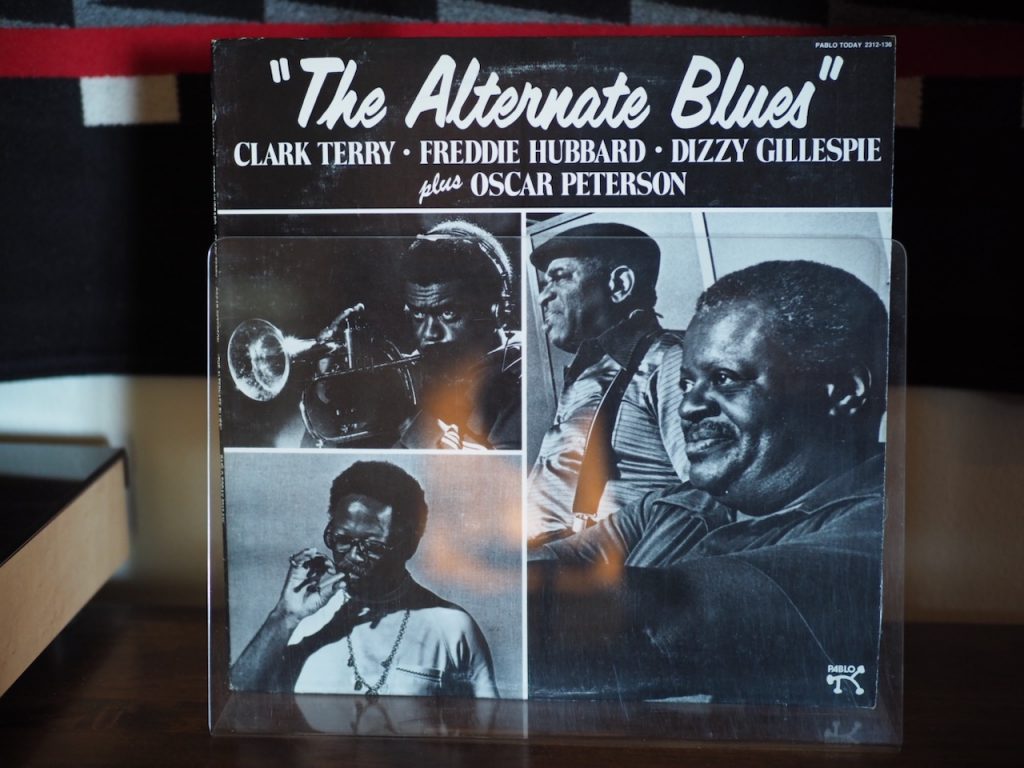
The Alternate Blues.
For a jazz LP, The Alternate Blues, featuring Clark Terry (trumpet, fluegel horn), Freddie Hubbard (trumpet, fluegel horn), Dizzy Gillespie (trumpet), Oscar Peterson (piano), Ray Brown (bass), Joe Pass (guitar), and Bobby Durham (drums), has a nice variety of instruments, and of course trumpet tone is always a good test of a system, for if anything is amiss you'll hear it in a hurry.
Dizzy's trumpet had a live-like piquant tone, but never verged over into being harsh or shouty, even at higher volumes. Oscar's piano sounded beautiful, with sparkle to his tone, and Ray's upright bass had excellent pitch definition, and well, sounded like an acoustic bass should sound.
Once again, listening to The Alternate Blues pretty much just blew me away with the superb musicianship on display, and in musicality & audiophile-style sonics terms, the balance approached my ideal for home listening, with that sense of expansiveness, scale, dynamics, and natural presentation all in evidence, which really provided me a strong connection to the emotional content of music.
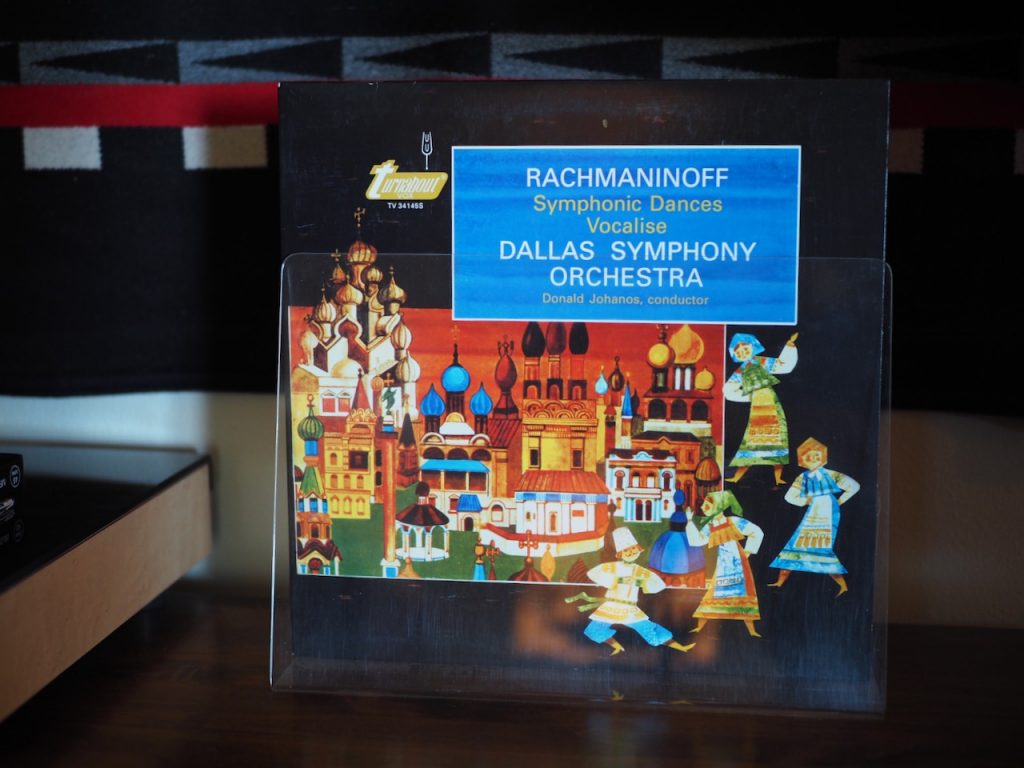
Rachmaninoff Symphonic Dances and Vocalise, Dallas Symphony Orchestra.
For a little classic music vibe, I listened to the Rachmaninoff Symphonic Dances and Vocalise LP, by the Dallas Symphony Orchestra, with Donald Johanos conducting. My album is the Analogue Productions 45 rpm version.
As one would expect from a 45 rpm version of an Analogue Productions reissue, the sound aces musicality, while still maintaining a well-balanced presentation in visuospatial terms.
The big dynamic swings that this album is known for were served well by the 802D compression drivers, which handled the big dynamic swings with a sense of ease that was impressive.
Whether it be the big bang of timpani & bass drum hits, or softly played strings, or the delicate and pure tone of a triangle, the blatting brass, or the breath of the woodwinds, the 802D just gets a beautiful balance of musicality and visuospatial effects, always sounded natural, with a big spacious presentation full of dynamic nuance, and beautiful music.
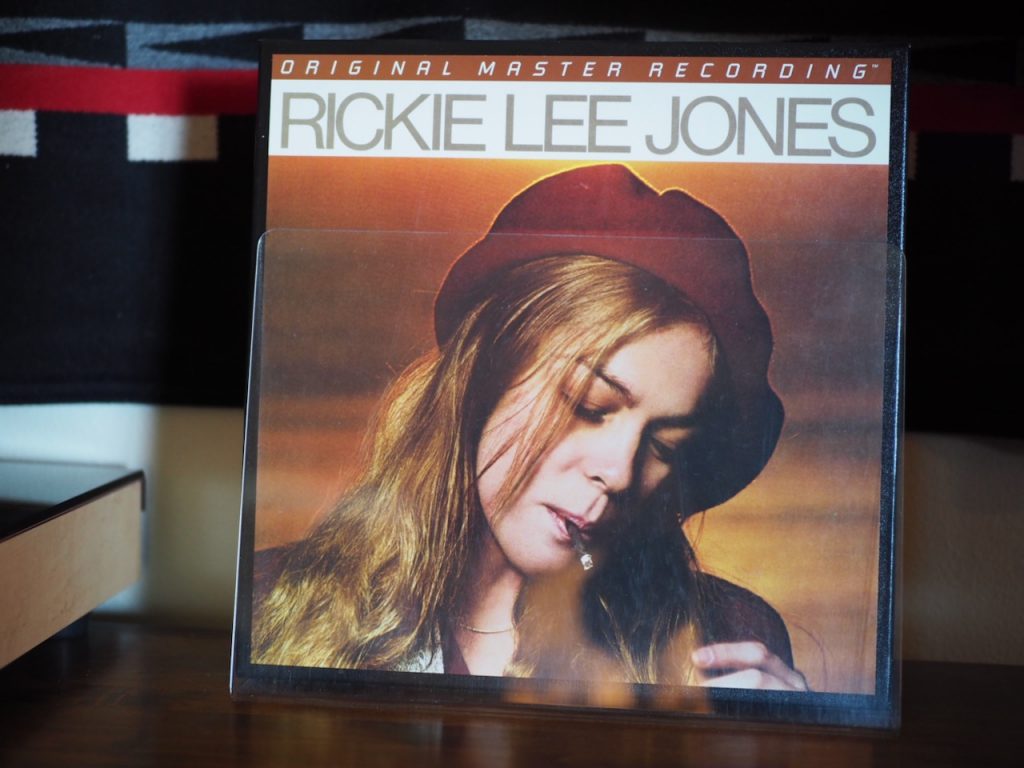
Rickie Lee Jones first album.
For a pop album, I chose to listen to Rickie Lee Jones' self-titled first album, Rickie Lee Jones, with this particular LP being the MoFi 45 rpm version.
I've always thought MoFi albums sounded a little bit forward and strident, compared to ... say one of Chad Kassem's excellent 45 rpm Analogue Production jazz reissues, for example. It seems like MoFi tweaked the overall balance to appeal to audiophiles looking for a sonic spectacular, with natural musicality taking second seat.
The 802D doesn't completely offset the usual MoFi audiophile-style balance, which leans a bit to the analytical and sterile side, but it does make it perfectly listenable, with that 'wide listening window' in evidence that these vintage compression drivers seem to do so easily, and makes even a MoFi balance a reasonably pleasurable musical experience.
The result is a vivid presentation of visuospatial effects, with a lot of resolved musical nuance, snappy beat and melody, and a somewhat over-dramatized audiophile-style of visuospatial presentation.
Even at that, the MoFi 45 rpm Rickie Lee Jones album sounded the best I've ever heard it, which is a compliment to the 802D compression drivers, bring a relatively nice balance of musicality and visuospatial performance to the album to make it an impressive musical experience.
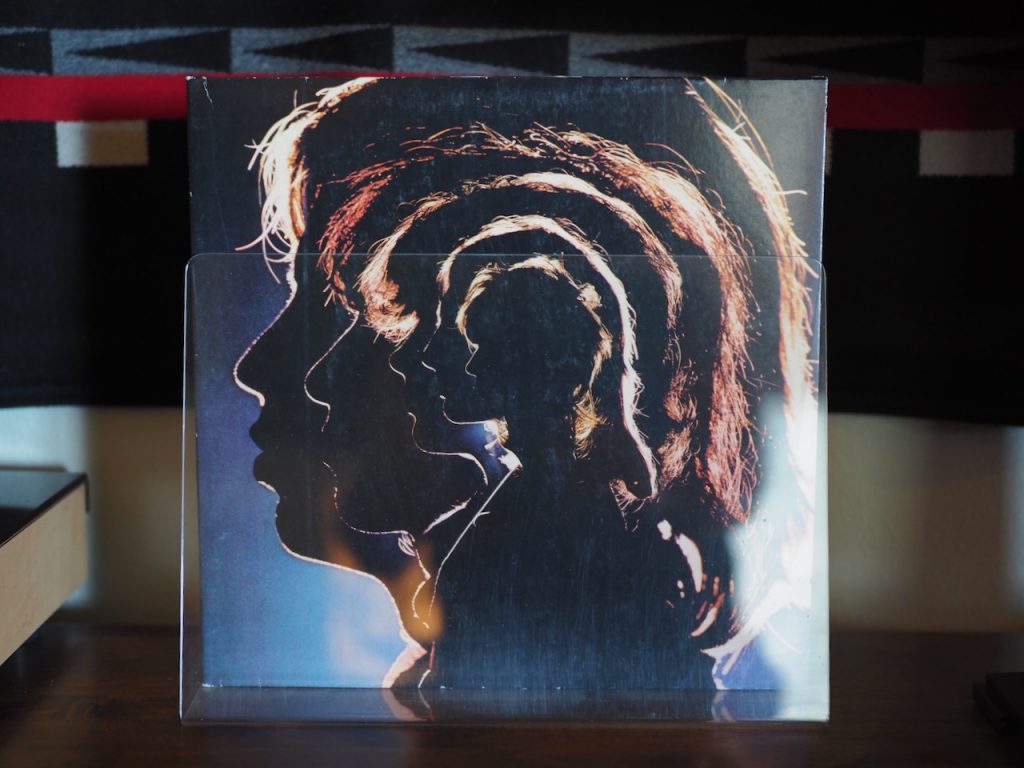
The Rolling Stones - Hot Rocks - 1964-1971.
For a rock & roll album I chose The Rolling Stones - Hot Rocks - 1964-1971. This album was sourced from Direct Stream Digital, which will make a lot of you turn up your noses in alarm, but it is okay, through the 802D compression drivers Hot Rocks sounds impressive.
From a visuospatial perspective, Hot Rocks had a wide and deep soundstage with vivid holographic-like imaging, while still maintaining natural musicality, and having that big spacious, dynamic, and vivid presentation that vintage horns do so well.
Jagger's vocals, for example, sound natural and engaging even when he really leans into them, and on slower numbers Jagger's voice sounds rich and natural.
On "I Can't Get No Satisfaction" I was really satisfied with the driving beat and distorted electric guitar energy that pushes the music forward with wild abandon.
Hot Rocks is another home run for the 802D compression drivers, providing lots of fun with this classic rock & roll.
Well, I'm running out of steam to write, so let's wrap it up.
Overall, I thought the 802D compression drivers provided a transparent and resolving window into the music, with superb overall tonality, musicality, and well-balanced audiophile-style visuospatial characteristics that added to the musical experience, rather than detracted from it as sometimes occurs when visuospatial characteristics are overemphasized.

Altec 804A (left) and 802D (right) compression drivers.
With the 802D compression drivers that sense of expansiveness, scale, dynamics, and natural presentation that vintage horns do so easily were all in evidence, which really brought the music to life in my living room, and gave me a strong connection to the emotional impact of the music.
The 802D compression drivers are terrific drivers and impress the heck out of me, so it is easy to hear why they have so much favor with Altec enthusiasts.
Next time I'll tell you what happened when I put the original vintage 804A compression drivers back into the vintage "Stokowski" Altec loudspeakers and listened to the same albums.
As always, thanks for stopping by, and may the tone be with you!



























